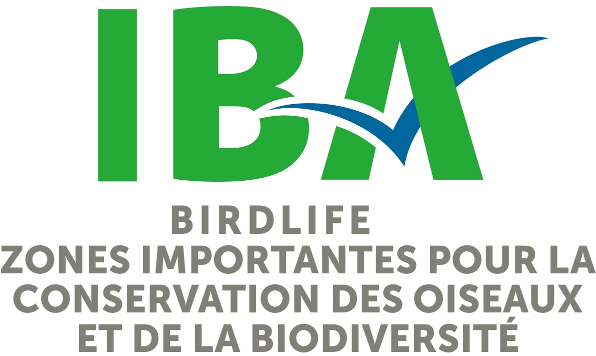Quill Lakes (SK002)
Wynyard, Saskatchewan
Description du site
The Quill Lakes are large (up to 420 km2), saline lakes in the Aspen Parkland of east-central Saskatchewan, situated north of the town of Wynard. The lakes are named (from west to east) Big Quill, Middle Quill (or Mud), and Little Quill Lakes. Middle Quill Lake is the smallest in area, while Big Quill is the largest (one of the largest saline lakes in the prairies).
During periods of high water levels, the lakes drain from west to east, however, they have no distinct inflow or outflows to nearby North Saskatchewan, Qu'Appelle, or Assiniboine rivers. Water levels are controlled by a series of dams situated within channels that link these lakes. All three lakes are extremely shallow - daily fluctuations in water levels and wind greatly influences the position of the shoreline. The muddy and gravelly shores are surrounded by grasslands, aspen parkland, and numerous freshwater and saline marshes. The Quill Lakes lie within the Quill Lakes Plain landscape area, within the Aspen Parkland ecoregion. Soils in the immediate vicinity tend to be black Chernozems of loamy texture and little or no slope. Approximately 65% of the land in the region is under cultivation. Cattle graze on a belt of Crown-owned grasslands immediately surrounding the lake.
Oiseaux
These lakes (Big Quill in particular), support an exceptional number of breeding Piping Plovers – in 1996, 435 individuals were recorded here, which was the largest breeding concentration in the world! Piping Plovers are identified as nationally Endangered (Committee on the Status of Endangered Wildlife in Canada; COSEWIC) and globally Near Threatened (International Union for Conservation of Nature; IUCN). Over the last five years there has been an average of 284 birds observed here which represents almost 4% of the global population, and nearly 14% of Canada's Western population – AB, SK, MB, and ON; 2011 populations. In 2006, 204 adult Piping Plovers were recorded on Big Quill Lake with no birds recorded on either Little Quill or Middle Quill (Mud) Lakes.
Whooping Cranes are also regularly observed here during fall migration: this is a globally Endangered (International Union for Conservation of Nature; IUCN) and nationally endangered (Committee on the Status of Endangered Wildlife in Canada; COSEWIC) species.
The Quill Lakes are also an important shorebird staging area, particularly during the spring. In 1993, a one day peak count found 197,155 shorebirds using this area. During a 1989-1992 study (one day peak count averages), several species were recorded in numbers that exceeded 1% of their biogeographical populations, including Hudsonian Godwit, Least Sandpiper, Bairds Sandpiper, American Avocet and Dowitcher. Especially large numbers of White-rumped Sandpipers (as much as 2% of their global population) and Stilt Sandpipers (as much as 8.9% of their global population) were also noted.
The Quill Lakes are also known as an important waterfowl breeding and staging area with hundreds of thousands of ducks, Sandhill Cranes, Canada Geese, and Snow Geese using the area each spring and fall.
Enjeux de conservation
In 1973, two areas on the Quill Lakes were recognized as key sites under the International Biological Programme: Middle Quill Lake Islands, and Little Quill Lake South Shore. The islands in Middle Quill Lake have since been designated as provincial wildlife refuges under the Saskatchewan Critical Wildlife Habitat Protection Act. In 1987, the Quill Lakes were used as the first implementation site for the North American Waterfowl Management Plan (NAWMP) in Canada. The first step in this initiative was the protection and enhancement of 6,630 ha for waterfowl and other wildlife. In addition, the site has been included in the Saskatchewan Heritage Marsh Program, declared a Ramsar site (1982) and identified as a Western Hemisphere Shorebird Reserve (1994). Some of the threats to the site include pollution by agricultural pesticides and fertilizers, overgrazing, and industrial development (currently a potassium sulphate solution mine on the south shore). Currently however the major threat is wetland drainage. High land prices and high agricultural commodity prices have provided a great deal of incentive to private landowners to drain wetlands. Wetland drainage has had a tremendous impact on the lake levels, especially given that they are terminal basins for the entire watershed. While a provincial wetland drainage policy does exist it is rarely enforced and drainage of wetlands into the lakes continues unabated. Because of their shallow depths, changes in inflows can cause dramatic changes in water levels. For example, water levels on Big Quill Lake have varied by up to 2 metres approximately every 10 years. In 1990 and in 2005 water levels on Big Quill Lake reached all-time lows of approximately 514m above sea level. Since 2005, Big Quill Lake has risen annually to 519.7 m in 2013, an increase of almost 6 meters. This has created wide spread flooding and has resulted in loss of all Piping Plover nesting sites, Sharp-tailed Grouse leks, and reduced the nesting colonies of cormorants, Franklin's Gulls, Black-crowned Night-herons, Western Grebes, Eared Grebes, and American White Pelicans. Tens of thousands of acres of native grasslands surrounding the lakes are underwater and the increasing water depths have drowned out extensive areas of emergent wetland vegetation. Increases in water depth has also caused a dramatic decline in use by staging shorebirds, and flooding has significantly reduced nesting activity. The lakes and most of the shoreline around the lakes are protected by the Saskatchewan Wildlife Habitat Protection Act. This Act prevents sale and the clearing, breaking and draining of habitat. This Act was recently changed allowing for the sale of land with or without the protection of a no break no drain Conservation Easement (CE). It is unknown at this time if any of the Crown Lands at the Quill Lakes have been made available for sale and if a CE will be a condition of that sale.
Catégories ZICO Habitats Usages Menaces Potencielles ou Existantes Status de Protection

